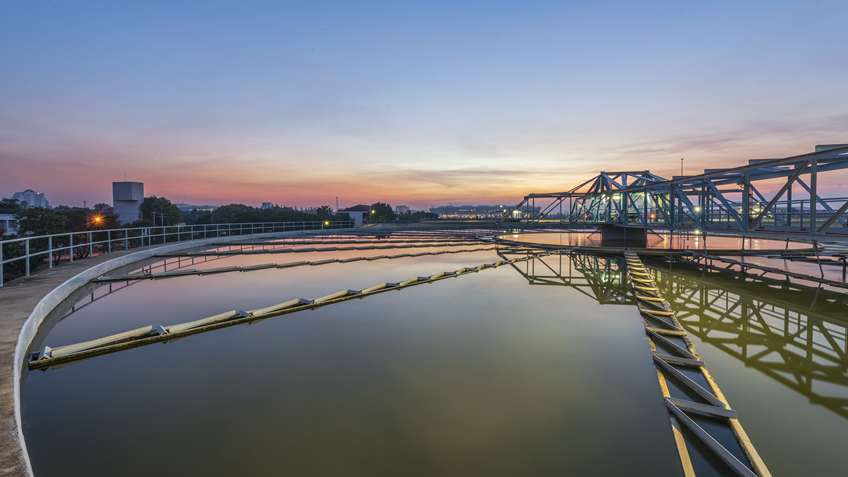By Sheila Kennedy, Contributing Writer
The unglamorous yet crucial task of sewer and wastewater treatment has direct impacts on public health and the environment, yet rapid population growth is stretching the capabilities of the nation’s water treatment infrastructure. According to the 2017 Infrastructure Report Card for Wastewater from the American Society of Civil Engineers (ASCE), more than 56 million new users will be connected to centralized treatment systems across the U.S. over the next 20 years.
One municipal wastewater treatment plant built in the 1970s is taking steps to enhance its capacity, operational efficiency and reliability. Located in a small, coastal U.S. city, the plant has 1.1 million gallons per day of processing capacity.
To address continually growing demand, the decision was made in early 2015 to incorporate a greater level of plant automation and control. The plant required modifications, including new instrumentation and controls (I&C) supported by a high-availability, mission-critical communications network and an extension of the plant’s existing outfall.
The water district chose Carollo Engineers to design and engineer the solution, which leverages the Converged Plantwide Ethernet (CPwE) Reference Architecture developed by Rockwell Automation and its Strategic Alliance Partner Cisco. It features a robust, redundant, fault-tolerant fiber-optic communications network from Rockwell Automation EncompassTM Product Partner Phoenix Digital Corp. (PDC), as well as Rockwell Automation control system products the customer specified.
Core Challenges Limit the Options
Budgets are tight in small, municipal water treatment plants such as this one, which makes the operational efficiencies afforded by industrial automation highly desirable. However, any potential savings must be weighed against implementation and maintenance costs.
The plant sought access to real-time data and diagnostics to help improve decision-making, increase uptime and minimize manual processes such as paper-based charts and graphs. Fast, secure Ethernet connectivity was needed for the central control system to collect data and generate the required reports automatically. The underlying communications network needed to be cost-effective and industrially hardened — capable of providing fault tolerance and redundancy to help achieve maximum availability and reliability.
The network also had to be as immune as possible from electromagnetic noise. “Water treatment environments are prone to electrical noise and static due to electrical drives and other powered equipment, which have the potential to corrupt electronic communications. If a copper or metal conductor is introduced into that environment, it may pick up extraneous electromagnetic noise and interfere with a signal being transmitted through it,” explains Amit Sahdev P.E., senior I&C engineer at Carollo Engineers.
Another key consideration was the lack of IT personnel on staff who had the necessary skills to support a typical Ethernet network for the advanced control systems. The water district had no budget to outsource the role under a maintenance service contract, so installation and maintenance simplicity was a must for the new communications network.
Finally, to be adaptive and effective for the long term, the solution needed to be scalable, expandable and capable of accommodating future I&C and networking technologies.
Optimal Proposal Simplifies the Selection
The water district specified its preference for Rockwell Automation products in its request for proposals (RFPs). Carollo Engineers had a history of Rockwell Automation solution knowledge, having specified and worked with its technologies for more than 50 years.
Carollo also had a successful track record with the water district, including preparing the wastewater treatment plant’s facility plan. After assessing the RFP responses, the water district awarded Carollo Engineers the two-part, $9 million project, which included both the plant modifications and outfall extension.
The solution Carollo proposed for installation at the existing water treatment plant was tailored to the plant’s skill sets and budget and provided all of the requested capabilities. The cost-effective, low-maintenance, energy-efficient solution was designed to help provide maximum availability.

![Figure 1. The low-maintenance, energy-efficient solution recommended for the water district was based on the Cisco-Rockwell Automation CPwE Reference Architecture and designed for maximum availability. [CLICK TO ENLARGE]](https://rockwellautomation.scene7.com/is/image/rockwellautomationstage/architecture-diagram--photograph-848w477h.848.jpg)
![Figure 2. The secure, noise-immune fiber-optic communications network includes the OCP plug-and-play fiber-optic module from Phoenix Digital Corp. that provides fault tolerant, redundant communication. [CLICK TO ENLARGE]](https://rockwellautomation.scene7.com/is/image/rockwellautomationstage/pdc-module-icon--photograph-848w477h.848.jpg)
